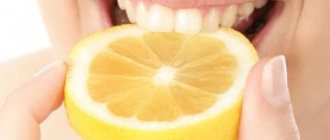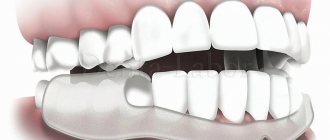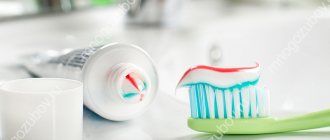Date of publication: 18-01-2019 Date of update: 17-02-2021
Author of the publication: Bogatyreva Radima Muradinova Periodontist
The whitening procedure is often perceived as aesthetic, but it also has many positive properties in terms of health improvement. Sometimes patients refuse a snow-white smile because they are embarrassed to discuss the procedure with a dentist or believe myths from the Internet. In this article you will find answers to the most popular questions about teeth whitening that are asked to dentists at the Clarimed clinic.
When is whitening needed?
Different people have different shades of enamel. This is due to genetics, lifestyle, and the quality of hygiene procedures. Changing the color of teeth can have several reasons:
- insufficient oral care;
- artificial or natural colors contained in food;
- bad habits;
- jaw injuries, some systemic diseases;
- taking medications;
- age-related changes.
If any of these reasons are present in your life, or you simply want to lighten your enamel a few shades to make your smile look healthier and more beautiful, this is an indication for whitening.
Reasons for discoloration of extended teeth
The situation when the extended tooth turns yellow several years after a visit to the dentist is quite normal. Most often this is due to the quality of the materials with which the doctor performed the extension. As a rule, these are composites. They tend to accumulate odors and dyes. In addition, if they are not polished every 3-4 months, they lose their smoothness, become rough and “cling” to plaque even better, and also absorb various pigments.
Important! The extended tooth requires very careful hygienic care and also requires adherence to a certain diet, which is especially important when the restoration is performed in the frontal area of the smile. Otherwise, after a short period of time you may notice that it is different in color from the rest.
A bad habit such as smoking can cause a quick change in the shade of the restoration.
Darkening can also be caused by other serious circumstances: trauma, development of secondary caries, pulp necrosis, incorrectly or poorly treated root canals. However, then, in addition to the change in shade, you will probably be bothered by other unpleasant symptoms, for example, pain. And here the first goal will not be bleaching, but treatment. To do this, you need to seek professional help as quickly as possible.
If before the extension the doctor removed the nerve and treated the canals, then the darkening of the enamel is associated precisely with depulpation, because the tooth was deprived of its source of vital nutrition, it became “dead,” fragile and susceptible to any negative factor from the outside. A tooth can also darken from the inside due to filling the canals with resorcinol-formalin paste.
The reason that the cured one stands out in color from the rest may also be the method of its restoration. For example, if the extension was carried out on a metal pin, then the rod may be visible through the restoration materials.
Does the procedure have any contraindications?
As with any manipulation in the dental chair, there are contraindications, but not many of them:
- pregnancy and breastfeeding;
- oncological diseases;
- allergies to the drugs used.
All other problems - caries, inflammation of the oral mucosa and gums - are considered relative contraindications. After they are eliminated, bleaching can be done.
Even if you take good care of your teeth, whitening will have the effect of making your smile even more aesthetically pleasing.
Products that stain enamel
The enemies of your snow-white smile are the most common drinks and foods: tea, coffee, red wine, colored lemonades, berry juice, dark berries, soy sauce, chocolate and others. In addition, any sweets spoil dental health, since sugar creates a good breeding ground for bacteria. They produce acid that destroys enamel. Teeth become yellow and brittle.
So, if you want your smile to be snow-white, watch out for the consumption of these products. Especially if you have recently had a whitening or hygienic cleaning. In this case, you should stick to a white diet. Otherwise, the enamel will quickly return a yellow tint.
Which teeth should not be whitened?
Whitening is not carried out if there is untreated caries in the oral cavity, exposed tooth necks, or enamel damage. If there are composite fillings, the procedure will give an uneven effect, because the color of inorganic materials is not subject to change. The most correct thing would be to install a temporary filling and carry out whitening before the final restoration of the tooth.
The procedure is also not carried out in the presence of braces due to the unguaranteed and uneven result. Exposure to chemicals on the enamel of hypersensitive teeth is undesirable.
Whitening toothpastes - myth or reality?
Conventionally, modern toothpastes can be divided into two categories: those that contain components that include whitening chemicals (oxidizing agents); abrasive pastes that polish the surface of the tooth and at the same time give it a snow-white tint. These pastes contain sodium bicarbonate (soda).
How do toothpastes of one and two types affect the change in tooth color?
Whitening toothpastes: be careful!
The first whitening option affects the enamel with the help of strong oxidizing agents (hydrogen peroxide, urea peroxide), which remove pigment spots on the tooth surface by penetrating the bleaching agent into the dentin. An interesting fact is that it is the dentin that determines the color of the tooth; enamel is transparent in structure. In the late eighteenth century, people began using hydrogen peroxide to combat yellow discoloration, but since then many other oxidizing agents have emerged that can eliminate the problem. Carbamide peroxide is a substance that softens the effect of bleach on the tooth and causes minimal harm to it. In any case, do not overdo it with oxidizing agents. Dentists advise changing toothpaste at least once every six months to avoid negative chemical influences. Don't be afraid to experiment, but remember that health comes first. As soon as you feel discomfort, go to the doctor.
Be carefull! The main component of toothpastes is the so-called abrasive , which can grind your enamel into powder. Like sandpaper, it destroys the tooth from the inside. As a rule, we do not notice the harmful effects of abrasives until the first painful sensations occur. While we are content with the fact that our teeth acquire a beautiful shade and are cleared of plaque and stones, we do not take into account how important it is to monitor changes in the structure of the teeth. If you dream of teeth as strong as a walnut, take care of them from a young age.
Some tips for using whitening toothpastes:
- Pay attention to the smooth, soft forward movements of the toothbrush during the brushing process.
- Rigidity and carelessness will only damage the integrity of the enamel;
- Do not choose toothpastes that contain calcium carbonate for the simple reason that this chemical element contributes to the occurrence of caries;
- If you have sensitive teeth, use pastes with a soft abrasive;
- Change your toothpaste once every six months to avoid addiction.
Let's say that at the moment you are in the household chemicals section of the supermarket, and you cannot choose a good whitening toothpaste. What interests you first? Of course, the composition and price of the product. When it comes to the composition of the paste, we can give you the following recommendations:
- Toothpastes with a white consistency have a cleansing property, since the content of abrasive substances in them is 30-40%;
- Gel-like pastes do not have high cleaning ability due to the fact that the amount of abrasives in them is insignificant. These products are suitable for people with sensitive teeth;
- Despite the advantages of “abrasive” pastes, it cannot be said that they completely whiten teeth from dentin to enamel, but rather eliminate accumulated dark plaque. Products based on hydrogen peroxide and carbamide peroxide can truly give your teeth a pearly tint. In addition to toothpastes, there are so-called gels, which also contain these chemical compounds.
How to whiten teeth at home?
All chemical preparations for teeth whitening at home, as well as professional ones, contain peroxide gels. They are applied using different devices:
- mouth guards – “covers” for teeth made of hypoallergenic plastic. They are filled with a special gel and worn for several hours a day;
- adhesive strips - stickers on teeth already impregnated with hydrogen peroxide or urea. A thirty-minute daily procedure will help brighten your smile by one or two shades in just a month;
- whitening gels and pencils - used in the same way as strips.
But Clarimed specialists recommend visiting a dentist before starting home whitening; our clinic even offers a free consultation; don’t risk the health of your teeth.
Teeth Whitening vs Veneers: Which One is Right for You?
Veneers are expensive, but will last a long time. They can also solve several dental problems at once - chipped teeth, uneven spacing and discoloration. But if you wear them, the enamel of your teeth will be forever changed. There is no turning back.
Professional teeth whitening is routine, safe and effective. The risks are minimal and the cost is reasonable. However, depending on the type of problem, this may not work. This procedure will not solve problems such as crooked teeth or gaps. And you may have to do this every few years.
The best way to find out which treatment is right for you is to visit a clinic for a consultation. During your visit, we can evaluate your situation and develop a treatment plan that best suits your needs. We'll answer all your questions and address your concerns so you can make an informed decision about advanced dental care.
Any cosmetic decision is best made by weighing the factors that are most important to the patient. Choosing between teeth whitening and veneers is no different. Discussing your options with your dentist will help you decide what makes the most sense for you.
Is it possible to whiten teeth at home?
Home whitening has a serious limitation - it does not carry risks if it is carried out on absolutely healthy teeth. If the neck of the teeth is exposed, there are cracks in the enamel and carious cavities, such procedures will only cause harm. Before using chemical gels, you should consult your dentist.
Folk remedies that are recommended for whitening are no less traumatic for enamel than professional chemical ones. The use of soda, charcoal, and lemon juice sometimes causes more harm than bad habits or injuries.
What sensations can you expect from the procedure?
During whitening, there is most often no sensation, but mild discomfort and tingling may occur. The sensations depend on several factors: the thickness of the enamel, the presence of cracks in the enamel, and tooth hypersensitivity. If you know that your teeth are hypersensitive, then two weeks before whitening you need to undergo a course of remotherapy (a procedure that normalizes the mineral composition of tooth enamel) and repeat it for two weeks after.
How often do you need to perform the whitening procedure to maintain the effect?
Teeth whitening using chemicals changes the condition of the enamel. Therefore, doctors do not recommend performing it more often than once every 2 years. Between procedures it is recommended:
- For the first month, avoid food and drinks with active dyes - red wine, coffee, brightly colored vegetables.
- Quit smoking - nicotine will quickly return the yellowish tint.
- Visit your doctor regularly to get rid of plaque and tartar.
- Use threads, special pastes, and electric brushes in home care.
Remotherapy
This is a course of procedures that strengthen weakened enamel, restore the cellular structure of hard tissues, and saturate them with minerals. Remineralization of enamel helps reduce its sensitivity and reduces the risk of damage or caries. Dentists at the DentoSpas clinic recommend performing it before whitening if there are signs of weakening of the enamel (high sensitivity, reaction to temperature stimuli, sour or sweet foods, noticeable changes in the structure of hard tissues). It is also advisable to carry out remotherapy if a large amount of tartar has been removed during professional hygiene, if the enamel underneath shows signs of changes in structure or caries in the white spot stage.
You have questions?
We will call you back within 30 seconds
+7
Are preparatory procedures necessary before lightening tooth enamel?
The process of preparing for teeth whitening takes place in several stages:
- examination of the dentist and identification of absolute and relative contraindications;
- sanitation of the oral cavity and installation of temporary fillings, if necessary;
- removal of tartar, plaque, polishing and fluoridation.
A few weeks before the procedure, it is advisable to start a course of medications to reduce sensitivity and strengthen the enamel. The doctor will recommend special gels and pastes for treating teeth.
At the patient’s request, the dentist will take impressions to make a special mouth guard for subsequent use at home. This will help prolong the effect of the professional procedure.
Carry out the whitening procedure at the Clarimed clinic, we guarantee excellent results
How does non-professional whitening affect tooth enamel?
Frequent and uncontrolled use of chemicals for treating teeth leads to the gradual destruction of enamel. It becomes more porous, absorbs dyes faster, becomes cracked and loses its whiteness. The decrease in mineralization of the outer layer and its destruction can be partially compensated with the help of fluorine-containing preparations.
But provided that the whitening procedure is carried out in a dental clinic, in compliance with the recommendations of the attending physician, all risks and negative consequences will be minimized.
We hope that the whitening procedure is now clearer to you and you are ready to achieve a Hollywood smile. Call or sign up on the website:
We also recommend paying attention to the popular service - installation of veneers - snow-white teeth like superstars!
What can be done with darkened restoration
If your extended tooth turns black, there may be several options for solving the problem. All of them can be done with the help of a dentist.
Artistic extension
Patients who have teeth made of composite materials often complain of a rapid loss of smile aesthetics. However, they have the advantage that such a restoration can always be replaced with a new one. The doctor can easily grind off the old composites and apply fresh ones that will match the color. All this can be done in one visit to the clinic, and you won’t have to burden yourself with big expenses. The asking price is from 5 thousand rubles.
On a note! Has the composite material used for the extensions become dull and lost its shine? Perhaps polishing and sanding it will be enough. If you contact your dentist for this service every 3-4 months, the restoration will retain its beauty longer.
Installation of veneers or lumineers
The thinnest ceramic or zirconium dioxide plates will make your smile beautiful not for 2-3 years (as with composite restoration), but for 10 years or more. At the same time, the linings will not change their color under the influence of pigments from food and drinks, and will not lose their shine and whiteness throughout the entire period of use.
It is worth noting here that it is better to install onlays of this type on all teeth located in the smile zone at once, because otherwise they may stand out against the general background. And then it will seem that the neighboring teeth are darker than the one that was restored.
“The tooth added to the front has darkened. In principle, this was expected, because... The doctor warned that sooner or later such a problem would happen. I decided to replace it with Lumineers, but I was very upset when I learned that Lumineers can only be installed as a set, in the amount of 6-8 pieces at once, and this is a very expensive pleasure. And wait several months. After all, the originals have to be ordered from America itself. In the end, I limited myself to a couple of veneers - it turns out that it’s possible. It was really cheaper and looks really nice!”
Christina, fragment of review from otzovik.com
3, Crown installation
To avoid having to think about bleaching and constantly redoing the restoration, you can install a crown made of ceramics or zirconium dioxide. These materials are optimal for the smile area: they have the shine and color of natural enamel, retain their whiteness and performance characteristics for 10 years or more.
This option is best considered for patients whose teeth are severely damaged.
“Five years ago, I fell on the street in icy conditions and suffered a jaw injury; one front tooth, which was built up with a composite due to a slight curvature, was also broken. He had to be depulped. Then I wanted to restore it: for example, to build it up again or put in a veneer, but the doctor said that this was contraindicated, because it is now very fragile, and over time it will begin to darken due to the lack of nerve and the blackness will show through, so it is better to immediately protect it with a crown. We chose ceramic. It looks like it can’t be distinguished from the others by its color, and after years its appearance doesn’t change at all, although I don’t particularly limit myself in anything - I eat and drink whatever I want.”
Alisa Talalueva, review from 32top.ru










